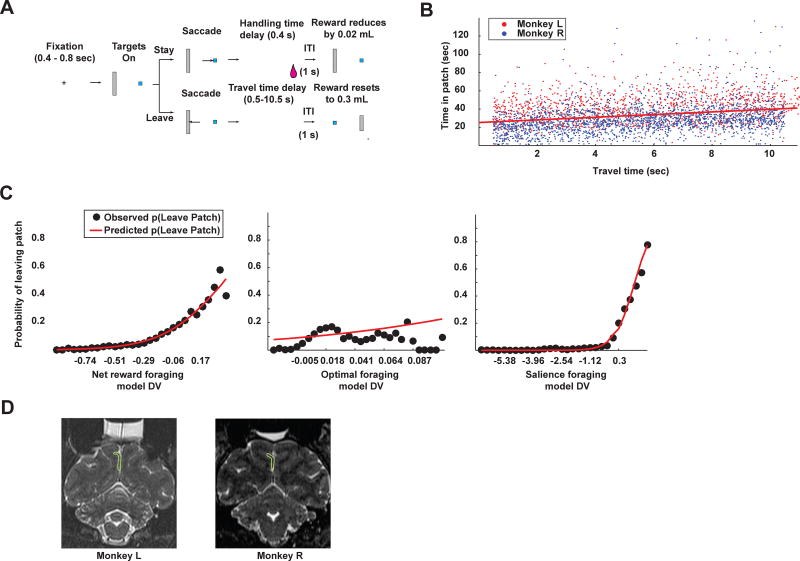Figure 1.
Patch foraging task reveals sensitivity of monkeys to salience during foraging. A. The patch leaving task. Monkeys fixate on the central cross for 400 – 800 ms. Fixation then extinguishes and targets appear. If monkeys choose the small blue rectangle (stay in patch option), then a small reward is delivered after a brief delay (handling time; 400 ms) followed by one second intertrial interval (ITI) and beginning of a new trial. Reward associated with the stay in patch option also decreases by a small amount. If monkeys choose the large gray rectangle (leave patch option), they must wait through a time-out period corresponding to the height of the gray bar, and do not receive reward. This is followed by one second ITI and beginning of a new trial in a new patch. At onset of a new patch, reward associated with the blue rectangle resets to a constant initial amount, locations of the blue and gray rectangles are swapped, and a new height for the gray bar, signaling the travel timeout to replenish the patch, is selected from a uniform distribution, which correlates with a delay ranging from 0.5 to 10.5 seconds. B. Time in patch plotted as a function of travel time. As travel times grew, monkeys stayed longer in a patch. 3511 patches in 43 electrophysiology sessions across both monkeys. C. Probability of leaving a patch vs. the decision variable for three different behavioral models. Black circles: mean observed probability of leaving a patch for the corresponding value of the decision variable. Red lines: predicted leave probability. All three plots display a logistic regression of leave or stay decisions against the decision variable. Left panel: net reward foraging model; middle panel: optimal foraging model; right panel: salience foraging model. D. Recording locations for both monkeys.

